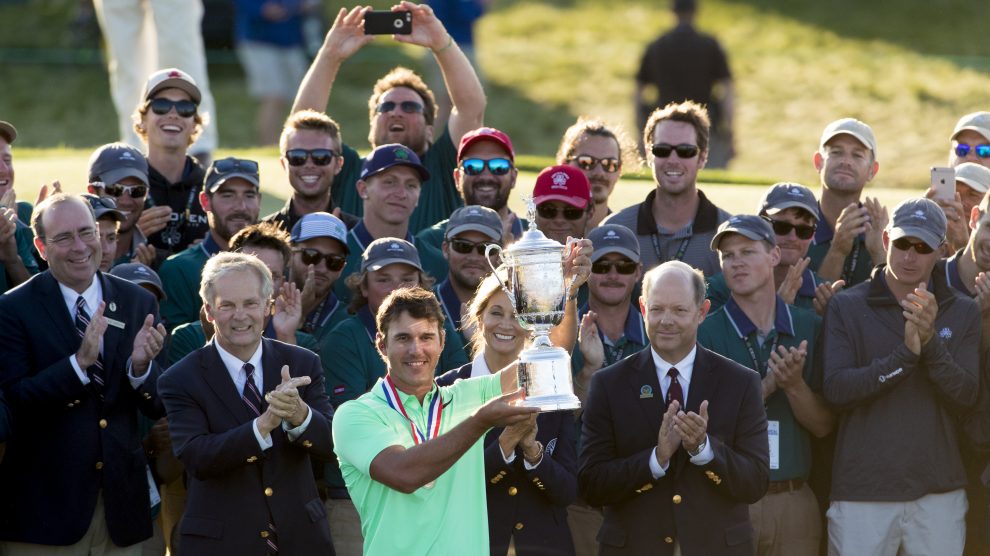This year’s U.S. Open was supposed to be the inevitable crowning of a dominant champion, one who bludgeoned Erin Hills, and the field, into submission. Brooks Koepka delivered exactly on those expectations. So, why was it a bit of a surprise?
Wasn’t Koepka always supposed to be in that spot, strutting down the 18th fairway like a gladiator celebrating his kill? Yes, Brooks Koepka was supposed to win a major, but so was everybody else.
Hindsight shows why Dustin Johnson, Rory McIlroy and Jason Day were flawed picks last week. Armed with evidence of Koepka’s newfound patience, he joins a growing list of major combatants in a limited pool of opportunity.
“I felt like that has been the thing lately with me, why I haven't really played that well, I've been trying to win so badly,” Koepka said after winning. “I felt like I've underachieved. And the more patient that I can become, the more times I'll put myself in this situation.”
McIlroy was supposed to have five majors by now. Surely Day would have more than one. Johnson would be halfway to the 2017 Grand Slam if not for some pesky stairs and baby No. 2. Wait, would they?
“I thought the way my game set up I think I can win multiple times a year, I really do,” Koepka added. “And I think this is hopefully major No. 1 and there's many more to come.”
Therein lies the burden: With seven straight first-time major champions and a growing roster of capable players, the top of golf has grown too deep for a dominant run. Injuries are creating shorter shelf lives, and technology is allowing the athletes of the game only weeks of realized powerful perfection.
Koepka led the field in driving distance for the week and hit greens at a record clip. On the amateur side, a kid from Texas A&M, Cameron Champ, flexed 190 mph ball speed in rocketing up the leaderboard. The modern game has taken over, with plenty of carbon copies.
While it is easy (and justified) to examine the scar tissue that haunts the most marketable names in golf, it might not be flaws that are holding back the emergence of a dominant star.
The game itself is producing an athletic, elite class of players that have revolutionized and neutered the game with each 340-yard 3-wood. Sunday afternoon (like Justin Thomas’ 63 on Saturday) was equal parts brilliant and boring. Koepka dismantled a difficult golf course and left no doubt, and no challengers.
He wasn’t the first of this generation to do it, and he won’t be the last.
“We hang out back home. Everybody knows everyone's potential,” Koepka said. “Those guys are going to win a bunch of majors. They're going to have unbelievable careers.”
He’s right, but how many? Forget the Big 3, Big 4 or whatever collection du jour is hot. The game is simply just Big.
The Other Winner
Each week, I highlight a player who, while not winning, took something big away from the previous weekend.
Beau Hossler – Many questioned how the Web.com Tour could have an event competing against the U.S. Open. Yes, some players fighting for a PGA Tour card were denied a start if they had qualified for the year’s second major. Forgive me for not losing sleep over their dilemma.
Hossler, celebrating the fifth anniversary of his U.S. Open performance as a teenager, Monday qualified for the Air Capital Classic in Wichita and then finished runner-up to Aaron Wise, who had the second-best weekend to Koepka. That gets Hossler Web.com Tour status for the rest of the year, a year after shoulder surgery put his professional debut on shaky ground. I don’t think he will question the location on the schedule for his break through professional performance.

